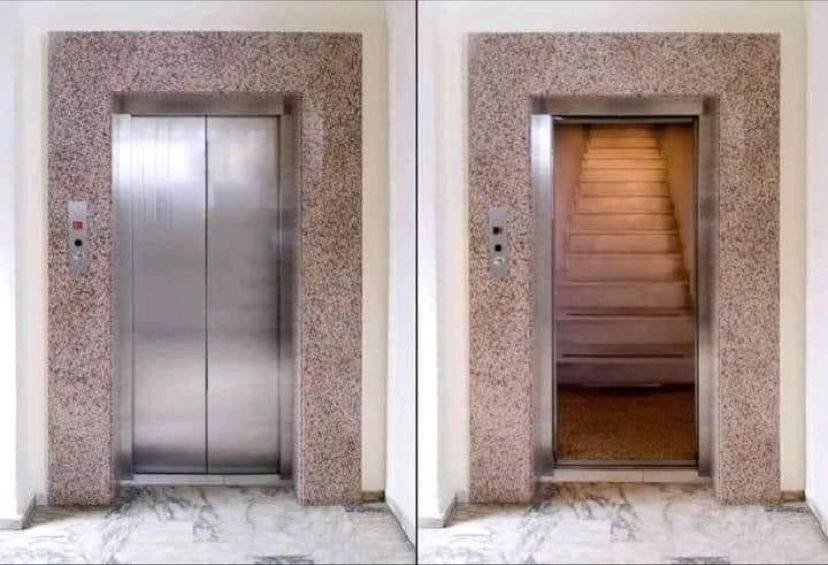Blog
News - Insights - POV’s

How Mathematics Helps Us to Guide Patients in Hospitals
At Eyedog, we guide patients through hospitals with precision, flexibility, and intelligence. By owning every part of our navigation platform and leveraging a highly detailed spatial model, we adapt routes down to the meter. Whether it involves architectural quirks, operational rules, or individual patient preferences, Eyedog calculates the most optimal path instantly. Backed by a continuous feedback loop and powered by Dijkstra’s algorithm, our system ensures that every step patients take is as smooth, clear, and efficient as possible.

Why Hospitals Should Forget Maps and Go Fully Egocentric
On average, 60% of hospital visitors are new and unfamiliar with the building. Expecting them to understand the layout before finding their appointment is simply unrealistic. That is why egocentric tools — built around the user's own perspective — are a far better fit. No maps, no abstractions. Just clear, turn-by-turn directions that meet people where they are. At Eyedog, we designed our solution around exactly that principle. It just works

Designing for Context: How Japan Masters Wayfinding through Effective Spatial Information Design
Recently we returned from a two-week study trip to Japan to explore how they manage wayfinding in some of the busiest public environments on earth. What struck us most was not the beauty of the design—but its contextual intelligence. Whether in Tokyo’s vast metro system or an Osaka hospital, every element is tailored to the situation. Japanese spatial design is not about aesthetics. It is about helping people move, with clarity, calm, and precision.

The True Cost of Poor Wayfinding in Hospitals: Breaking Down the Numbers
When we think about inefficiencies in hospitals, we often consider staff shortages, outdated equipment, or administrative bottlenecks. But one hidden and costly problem affects nearly every hospital: poor wayfinding.
A confusing wayfinding system—signs, maps, and directions that are unclear or inconsistent—does not just cause frustration. It costs hospitals hundreds of thousands of dollars per year in lost productivity, inefficiencies, and wasted staff time.
In a landmark 1990 study, researcher Craig Zimring analyzed the financial and human costs of poor wayfinding at Emory University Hospital. His findings were eye-opening…

The argument "We need to be cautious with digitalization because the hospital population mainly consists of older adults" is a fallacy.
Since we began offering mobile wayfinding solutions in healthcare environments, we have frequently heard the argument:
“Yes, but hospitals are full of elderly people. They can’t handle all this new technology, complex user interfaces, and most of them don’t even have a phone.”
At first glance, this argument may seem logical. Older adults do place disproportionate demands on healthcare services. But does that justify such a claim? If you dig just a little deeper, you’ll quickly see that this counterargument is, in fact, a fallacy.

Designing for Patient Wayfinding is #phygital and #digitalfirst
It’s mind-boggling to see that the majority of hospitals are still stuck in 1988 when it comes to Patient Wayfinding...
Today's patients expect a retail-like experience, characterized by effective, personalized, and empathetic communication. In virtually every survey, patients consistently express the need for better information regarding the physical patient journey.

The 3 Main Reasons Why ‘AR Wayfinding’ Won’t Work in Hospitals (today).
AR wayfinding is a total hype, just like Blue Dot indoor navigation was in 2014. With the combination of platforms like PTC Vuforia, Unity, Mapbox, Matterport, ARKit, etc., creating a simple AR wayfinding application is easy. Social Media is full of mockups, demos, and even some real-life deployments of AR wayfinding. Admittedly, it looks impressive, but supporting wayfinding is more than just projecting a few AR elements on a straightforward path.

Why Most Digital Indoor Wayfinding Tools Fall Short in Hospitals
How well someone can navigate a building depends largely on their knowledge of the space. This spatial knowledge can be categorized into three types: knowledge of a specific point in space (e.g., the destination), route knowledge (the path from their current location to the destination), and survey knowledge, which involves understanding the overall layout of the environment (Wiener, 2009).
When designing tools to help people navigate, you are essentially addressing a "spatial knowledge deficit." Only by understanding and mitigating this deficit can you create effective navigation solutions. This requires a deep understanding of the spatial cognitive processes involved in wayfinding.

Comparing Mobile Wayfinding Solutions and their Efficacy in Hospitals
Hospitals are rapidly embracing digital transformation, including advancements in patient communication. Patients now expect effective, personalized, and empathetic communication—essentially a retail-like experience. They're accustomed to handling transactions and arrangements online and anticipate the same convenience from healthcare providers.
A study conducted by a major hospital in the Netherlands revealed that most patients prefer digital communication regarding their appointments. Beyond details like time, date, and doctor, patients also want to know: where they need to be, where to park, which floor to go to, and detailed directions on how to reach their appointment. In short, there is a growing demand for precise wayfinding information. But how to pick the right solution?

Creating Effective Wayfinding Tools Requires Understanding of Spatial Cognition
Wayfinding is a complex process. We need to understand the underlying cognitive processes in order to create the right tools to help people navigate unfamiliar environments in a simple and effective way. Often, we develop solutions that address a non-existent problem because we do not fully grasp where the true wayfinding issue lies. We will illustrate this with an example: finding your way in a supermarket or a DIY store.

15 Common Mistakes / Blunders in Wayfinding Design in Healthcare
ince there are hardly any opportunities to test wayfinding design as a system within a hospital, innovation is slow.
This means we keep making the same mistakes, because if you do what you always did, you'll get what you always got.
When you see paperwork, you can be sure something is wrong. But if you look closer and notice the following things, you know something isn’t right either. 😊

How to Select the Right Digital Wayfinding System for Your Patients
We regularly engage in discussions with hospitals that have recently discovered the added value of digital wayfinding.
Once a hospital has gathered internal support to seriously explore the implementation of a mobile wayfinding system, the real search begins. People have seen all sorts of claims on social media, making it difficult to make the right decisions. So, what should you be looking for, and how do you make proper comparisons?

It's a Mistake to Believe People Download Apps Just for Indoor Navigation (in a Hospital)
People don’t download wayfinding apps for finding their way indoors. It doesn’t matter if the app is top-notch; people aren't interested. Learn why!

Efficient Wayfinding System Testing Using Set Cover Problem Optimization
Testing wayfinding systems is always a significant challenge. It is very difficult to establish a feedback loop where you receive feedback from users on the wayfinding performance and experience of the entire system, whether it is digital (mobile wayfinding) or analog (signage). See how we used mathematical optimization to get a fully tested system.

‘Inclusivity Washing’ in Wayfinding Design: The Confusion Between Universal Design and Inclusive Design
Inclusivity remains a critical issue in today's society, with significant strides still needed in ensuring equal opportunities and access across various systems. This principle is particularly relevant in our field: Wayfinding Design. Our goal is to make buildings, especially public spaces like healthcare facilities, accessible to everyone. However, the question arises—are we truly designing with inclusivity in mind, or are we merely echoing the hype and parroting the latest buzzword?

Beyond Good Intentions: Why Patient Feedback Isn't Enough for Effective Wayfinding in Hospitals
If I had asked people what they wanted, they would have said: 'faster horses'
Yes, this quote from Henry Ford may be overused, but it came to mind when I saw that a hospital—despite the best of intentions—asked patients for their feedback on the signage and suggestions for improvements

Accessibility Manager, the Critical Need for Better Hospital Wayfinding
Patient wayfinding consistently ranks as number six on the priority list, year after year. Action is only taken when things get out of hand.
The issue is that it's not a visibly urgent problem – there's no 'blood flowing through the streets'. It's hard to measure the exact costs associated with compromised patient wayfinding, making it easy to turn a blind eye. Yet, it's estimated to amount to hundreds of thousands annually (Zimring, 1990).

Confusing Terminology and Patient Wayfinding
Confusing terminology is one of the reasons why people get lost in hospitals (Mollerup, 2009). There are ways to reduce complexity, but somehow we manage to stir in new ones…

Exploring Bicycle Navigation Techniques in Hospital Settings
Sometimes I wonder if we should try something completely new to guide patients through hospitals using signage. Look at how wayfinding for recreational cyclists works in the Netherlands, for example. All cycling paths are modeled as a network with nodes and connections between them. This makes it incredibly easy for people to find their way.

Unveiling Eyedog 3.0
As the new year approaches, we're excited to unveil version 3.0 of the Eyedog Wayfinding platform. 🎉
This update is more than a mere enhancement of the navigation interface; it introduces our groundbreaking 𝗣𝗮𝘁𝗶𝗲𝗻𝘁 𝗔𝗽𝗽𝗼𝗶𝗻𝘁𝗺𝗲𝗻𝘁 𝗙𝗿𝗮𝗺𝗲𝘄𝗼𝗿𝗸.
